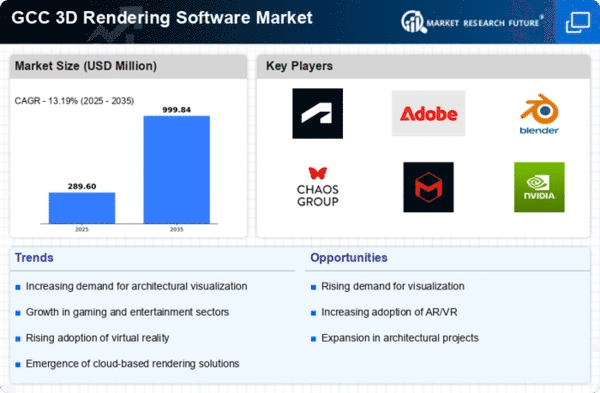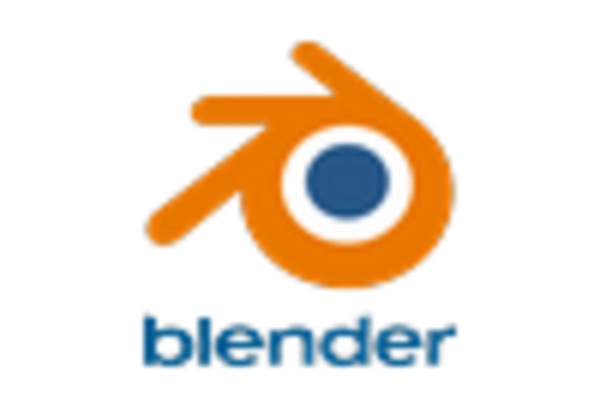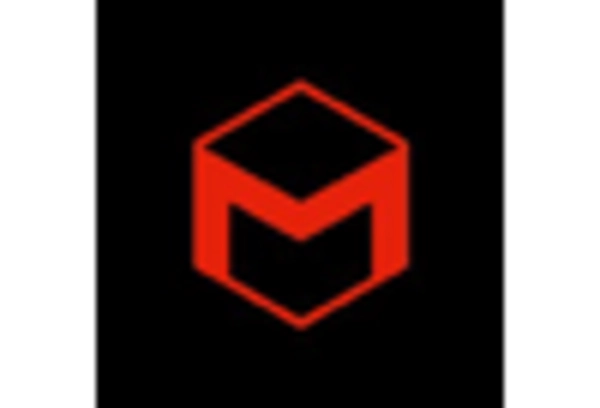Surge in E-commerce and Online Retail
The rapid growth of e-commerce in the GCC region is driving demand for the 3d rendering-software market. Online retailers are increasingly adopting 3d rendering solutions to enhance product visualization, allowing customers to view items in a more interactive and engaging manner. This trend is particularly evident in sectors such as fashion and home decor, where visual appeal is crucial for sales. The e-commerce market in the GCC is projected to reach $28 billion by 2026, indicating a strong potential for growth in the rendering software sector. As businesses seek to improve customer experience through advanced visual tools, the 3d rendering-software market is likely to benefit significantly.
Expansion of the Entertainment Industry
The entertainment sector in the GCC is undergoing rapid expansion, significantly impacting the 3d rendering-software market. With the rise of film production, gaming, and virtual reality experiences, there is an increasing need for sophisticated rendering tools. The market for gaming alone is expected to reach $1 billion by 2026, indicating a robust demand for high-quality graphics and immersive experiences. This growth compels content creators to invest in advanced rendering software, thereby driving market dynamics. As the entertainment industry continues to evolve, the demand for innovative 3d rendering solutions is anticipated to grow, further solidifying the market's position.
Rising Demand in Architectural Visualization
The 3d rendering-software market experiences a notable surge in demand driven by the architectural sector. As urbanization accelerates in the GCC, architects and developers increasingly rely on advanced rendering software to create realistic visualizations of their projects. This trend is underscored by a projected growth rate of approximately 15% annually in the architectural visualization segment. The ability to present lifelike models enhances client engagement and facilitates decision-making processes. Consequently, the architectural industry’s reliance on 3d rendering software is likely to bolster market growth, as firms seek to differentiate themselves through high-quality visual presentations.
Technological Advancements in Rendering Techniques
Technological advancements play a pivotal role in shaping the 3d rendering-software market. Innovations such as ray tracing and real-time rendering techniques enhance the quality and efficiency of visual outputs. These advancements enable users to produce highly detailed and realistic images, which are crucial for various applications, including product design and marketing. The introduction of new rendering engines and tools is likely to attract more users, thereby expanding the market. As companies strive to stay competitive, the adoption of cutting-edge rendering technologies is expected to drive growth in the 3d rendering-software market.
Increased Investment in Virtual Reality and Augmented Reality
The growing interest in virtual reality (VR) and augmented reality (AR) applications is significantly influencing the 3d rendering-software market. Industries such as real estate, education, and healthcare are increasingly utilizing VR and AR for immersive experiences. This trend is supported by a projected increase in AR/VR market value, which is expected to reach $300 billion by 2025. As businesses recognize the potential of these technologies, the demand for high-quality rendering software that can support VR and AR applications is likely to rise. This shift presents a substantial opportunity for growth within the 3d rendering-software market.

















Leave a Comment